The hip joint is the junction of the thigh and the pelvis. The joint is arranged in such a way as to provide any direction of movement of the foot. This feature causes the possibility of various damages. The problem causes pain in the hip joint.
The components of the joint undergo painful changes.
Characteristics of the causes of pain
Injuries
When there is pain in the hip joint, which radiates to the leg and buttocks, the cause of the pathology can be:
- Congenital dislocation due to unsuccessful childbirth. The lesion is diagnosed immediately in newborns. The baby has noticeable uneven folds in the buttocks, shortening of the legs. Often there is a stinging nerve.
- Traumatic dislocation. It is characterized by pain when you move your foot to the side, it is impossible to stand or sit. Hematoma and swelling develop in the joint area. Dislocation of the hip requires immediate treatment of the victim.
- Neck fracture. The diagnosis is more common in women over 60 years. The cause of the pain in the right thigh in the upper part of women is a banal fall. With a fracture, an acute pain is felt, which increases with movement. It gives a very unpleasant discomfort to the inside of the thigh. The damaged area swells, bruising develops over the joint. The injured limb becomes shorter, lameness develops. If the injury stings a nerve, the hip becomes numb.
- Joint injury. The pain is moderate, but increases with active movement. In a static position, the symptoms disappear. Such an injury is typical of people who are prone to falls. The victim is lame, but this situation passes quickly.
- Perforated fracture. The pain is moderate or severe. Movement aggravates the symptom. Rather a pinched nerve, in which the pain erupts, the limbs numb.
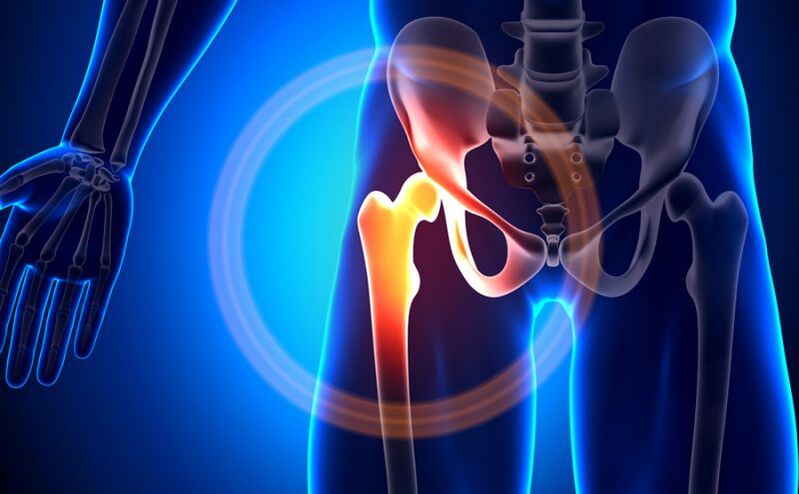
Traumatic injuries are a common cause of back pain in the pelvis. Severe fractures or dislocations often require surgery. If a nerve is pinched, the legs are numb - rush to the doctor immediately.
Systemic diseases
Joint pain can cause systemic connective tissue pathologies. The treatment of such diseases is required to be done constantly, as they are practically incurable. The treatment is organized and complex, it must have an impact on the cause of the discomfort.
Such diseases can cause pain:
- Bechterew's disease. The pain is dull, worse at night. Most often the bones of the pelvis ache, radiating to the knee, groin, thigh. Movement is difficult, the person is limited. Inflammation develops inside the joint.
- Reiter syndrome. The disease is characterized by damage to the urogenital organs, joints and inflammation of the conjunctiva. The pathology refers to autoimmune diseases, it develops due to intestinal infection. The pain in the hip joint that radiates to the groin begins to be felt a few weeks after the infection. The pain syndrome is acute, the temperature rises. The pelvic area is swollen. Most often, the disease causes symmetrical damage to the joints.
- Rheumatoid arthritis. The problem is characterized by inflammation of the connective tissue. With pathology, the joint is never impregnated. The disease is a precursor to coxarthrosis. Initially, there is swelling, pain in the bulb, discomfort when walking. Inside the joint, the temperature rises and then stiffness of movements develops. Remarkable pain in the hip joint located on the side at night. The pathology manifests itself in both the right and the left. Due to the destruction of the joint, the nerves are pinched.
Degenerative changes
The causes of hip joint pain, and rather sharp, pulling or burning, are degenerative changes due to such diseases:
- Juvenile Varus deformity. There is a dull pulling pain that radiates to the knee. Sports training increases the intensity of the syndrome.
- Coxarthrosis. The pathology is diagnosed in people of both sexes. It is treated for a long time and the treatment is quite complicated. The disease is characterized by the development of degenerative and destructive processes in the joint. Signs of the disease: the patient has joint pain due to heavy walking, running or climbing stairs. In other cases, the discomfort goes away. Then the inner side of the thigh hurts, the pain is given to the groin. Daily exercise greatly enhances the senses, but at rest the discomfort disappears. Due to the long walk, lameness is formed, the joint begins to strike. Muscle tone deteriorates, the work of the tendons is disrupted. In an advanced stage of the disease, quite intense pains are observed at night, the lameness is already intense. Immobility develops as muscles atrophy, losing volume. Treatment can stop the destruction of the joint.
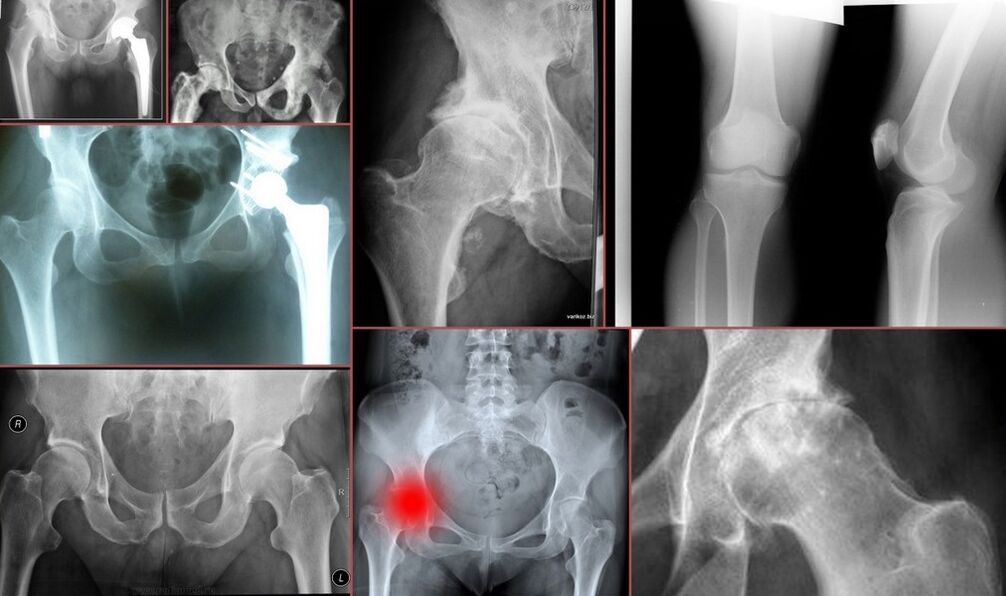
Such diseases cause constant lameness, as a result - a person is limited in his work activity, is not able to fully train. Even getting out of bed in the morning is difficult.
Inflammatory or infectious causes
In addition to immediate damage to the joint, inflammation of the joint sac, tendons or muscles can cause discomfort. Infectious diseases also cause pelvic pain in women and men:
- Tuberculous arthritis. The pathology mainly affects young children with a weakened immune system. The child gets tired quickly, runs a little. The thigh muscles begin to atrophy, the leg shortens, the joint clicks. Gradually, a strong joint pain syndrome develops. Sometimes the pain is sharp, but more often it burns or pulls. Later, perforation develops in the joint, which increases the symptoms.
- Purulent arthritis. With such a disease, the temperature rises, the skin around the joint becomes red, swelling is felt and an acute or acute pain is felt. Any load (public getting out of bed) is painful. The pain passes. Treatment can not be delayed because a person develops sepsis.
- Bursitis is an inflammation that affects the joint sac. The main symptom is pain in the leg. It is acute, when standing up the discomfort increases. When the limb is not loaded, the pain only burns.
- Aseptic necrosis of the femoral head. The pathology mainly develops in young men. Disease causes deterioration of blood circulation in the hip joint. Tissue cells die due to necrosis. The disease is characterized by acute pain radiating to the groin, a strong burning sensation in the affected area. It hurts so much that the young man loses the ability to rest his foot, it is difficult to get out of bed in the morning. Most of the time, just one injection of an analgesic helps the patient. After a few days, the pain symptom disappears. As the pathology progresses, changes occur in the tendons and muscles that atrophy. Gait disorder develops due to lameness.
In infectious pathologies, different pains develop: burning sensation, dullness or pulling. The discomfort is so great that it interferes with sleep at night. Any such disease requires immediate treatment.
Treatment
Even when hip pain is recurrent, it must be treated without failure. The methods of treatment depend on the provocateurs of the symptom.
congenital dislocation
When the dislocation is congenital, the baby is placed on the joint with orthopedic products: struts, stirrups, the use of a Freik pillow is recommended. Such funds help keep the newborn's limbs in a normal position. The baby should be in such conditions for at least six months.
When traditional treatment fails, the baby needs surgery. Functionally, the head of the bone is placed in place in the newborn, while correcting other defects. When the orthopedic devices have already been removed, the child is given a light massage to strengthen the muscles.
Traumatic dislocation
When there is a traumatic dislocation, the doctor prescribes drugs that eliminate muscle tone and then places the hip in place. After that, the patient should be kept calm. If there is numbness of the limb, it means that the nerve is pinched. In such a situation, you can not do without examination by a neurologist.
Bechterew syndrome
The treatment for Bechterew's disease is complex. This helps to reduce the intensity of the symptoms caused by the inflammatory process. Treatment consists of medication (immunosuppressive, hormonal drugs, anti-inflammatory drugs), physiotherapy and therapeutic exercises (muscle stretching is especially useful). Massage of the affected joint is recommended.
Preparations along with therapeutic exercises are prescribed only by a traumatologist, surgeon or orthopedist. To strengthen the pelvic floor muscles, you need to swim more. In difficult situations, the patient is prescribed joint replacement.
Hip fracture
The treatment of such an injury is performed by a traumatologist. Surgery is recommended for the patient, as conservative treatment is rarely effective. However, if surgery is not possible, the patient is given a cast from the heel to the lower back. In older people, such lesions rarely develop together - the healing process takes months.
Among the consequences of the disease, the reduced functionality of the cardiovascular and respiratory system can be distinguished, as the patient does not have the opportunity to move normally and follow an active lifestyle. Even sitting is problematic for him.
When the joint is a fracture, there is a burning sensation inside the soft tissues. During the surgery, the fixation of the bone body and the head with pins or screws is used for treatment, while in difficult cases it becomes endoprosthetic.
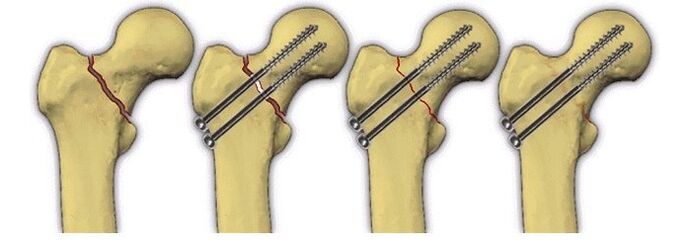
Reiter's disease
Antibiotics, glucocorticosteroids, anti-inflammatory drugs, immunosuppressive drugs and topical ointments are used to treat Reiter's pathology. The treatment lasts more than four months. Even adequate treatment does not prevent the disease from recurring.
The whole recovery period is required to maintain muscle tone with physical exercises - traditional stretching.
Rheumatoid arthritis
The cause of hip pain in women and men is often rheumatoid arthritis. Pathology can cause severe pain, it is impossible to get rid of it completely. However, medication should be used to improve the quality of life. Hormonal agents, cytostatics, non-steroidal anti-inflammatory drugs, anti-rheumatic drugs are used.
Surgery is used only when the disease is advanced, when the patient is practically unable to walk and sit. Suggest fixing the joint or its arthroplasty. Physical exercises, topical ointments are useful.
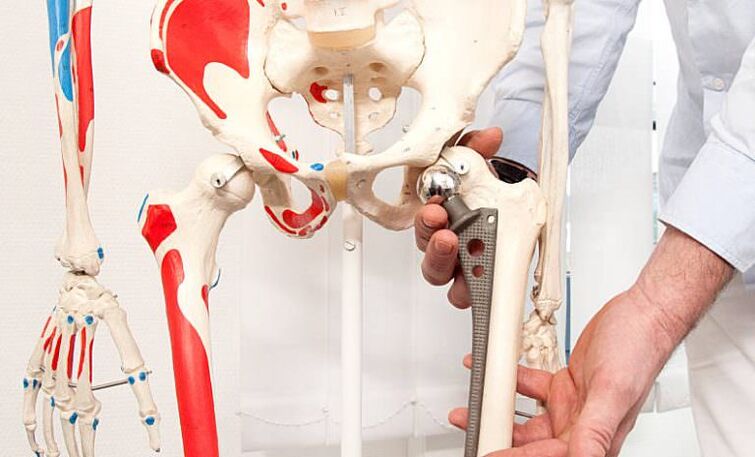
Coxarthrosis
The treatment of coxarthrosis seeks to eliminate the causes of the unpleasant symptoms. The pathology is initially treated with conservative methods. The patient is advised to take non-steroidal anti-inflammatory drugs, chondroprotectants, drugs that improve blood circulation.
In the treatment, warming ointments and painkillers are actively used. In addition, the patient is advised to undergo light therapeutic training. The joint often requires anesthesia, so intramuscular injections are used with considerable discomfort.
In advanced disease, conservative treatment does not have the desired effect. Any joint load worsens the patient's well-being. Without the help of a stranger, the patient can not get out of bed. She needs constant painkillers. In such a situation, only surgery can correct the situation.
Most of the time, arthroplasty is performed, but this procedure is contraindicated in older people. Because of this, only ancillary surgeries are organized for such patients. Surgical treatment is completed with a course of rehabilitation: minimal stretching, simple exercises performed under medical supervision.
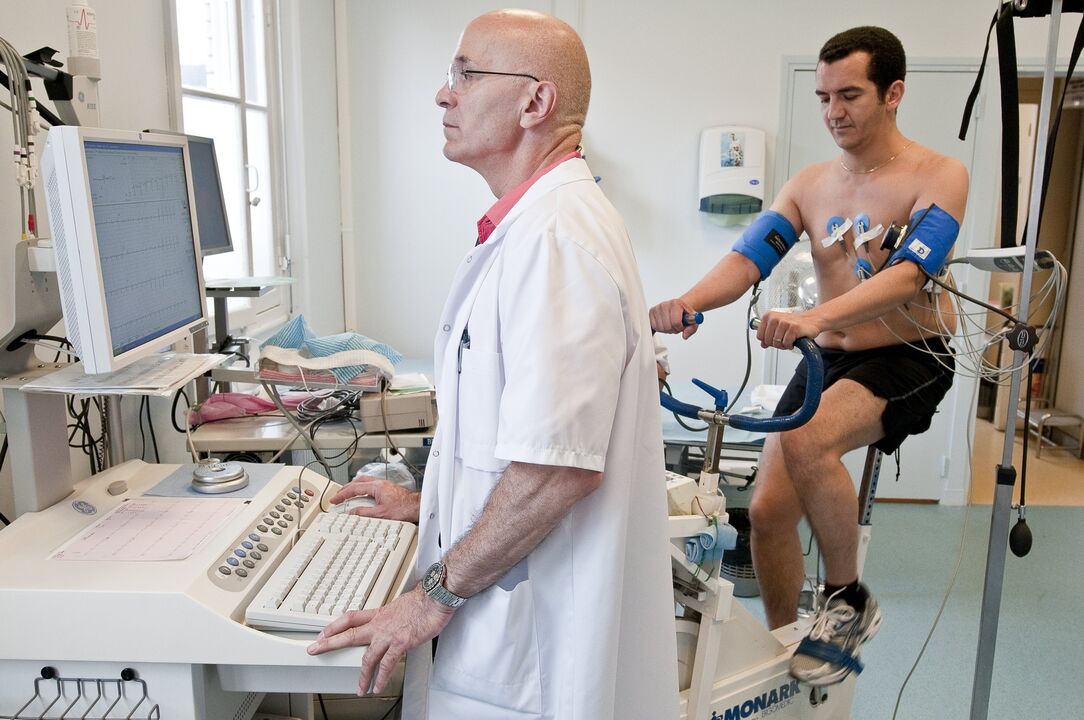
Proper treatment helps to stop the progression of the disease, to eliminate the painful symptoms.
Characteristics of treatment for infectious lesions
If the pain in the hip joint is caused by an infectious lesion, then you should first contact an infectious disease specialist. How to relieve pain in the hip joint with such a pathology? It all depends on the type of disease:
- Tuberculous arthritis is mainly treated conservatively. The patient should limit mobility by applying a tight bandage. When an abscess grows inside the soft tissues, it is surgically removed.
- Purulent arthritis. Initially, anesthesia of the affected joint is performed. For this, an intra-articular injection of an analgesic is used. Antibiotics and antibacterials are used against the infection, using different groups of them at the same time, which are only prescribed by a doctor. In addition, the abscesses are removed. The affected limb must be immobile - the patient is placed in a splint or cast.
- Treatment of aseptic necrosis includes the restoration of poor blood flow, the absorption of dead areas. For limb anesthesia, non-steroidal anti-inflammatory drugs and vitamin complexes are used, drugs to reduce blood density. When the thigh hurts, an anesthetic ointment and massage procedures are also prescribed. The disease is still treated with physiotherapeutic agents, therapeutic exercises. In complicated situations, minimally invasive surgeries or joint arthroplasty are used.
- As bursitis causes severe pain, anesthesia should be adjusted. For this, anti-inflammatory drugs and analgesics are used, introducing them intramuscularly. Steroid drugs are used to quickly eliminate severe discomfort. Since the joint is constantly sore, it needs rest.
Numbness of the limb, burning and pain in the joint, which radiates to the limb, are unpleasant sensations that indicate the presence of serious pathology. Sometimes folk recipes help in such a situation.
Alternative therapy
When the patient has severe burning pain, the problems with the tendons are noticeable, but it is contraindicated to use drugs - the use of folk recipes is allowed. Although they are not a panacea, however, in combination therapy they can help to correct the condition. Before using any folk remedy, you must obtain medical approval for such a procedure.
Here are some recommendations:
- Clay compress. Such a folk remedy helps to eliminate pain and reduce swelling of the joint. It is recommended to alternate the clay, applying first blue and then black. Used at night, wrap the compress with a woolen cloth.
- Homemade ointment made from white foot root and visceral fat. Melt the fat, add the root to it, chopping it first with a meat grinder. Put the mixture on low heat. After boiling, keep the fire for another 7 minutes. Apply the cold ointment before going to bed on the affected joint. Be sure to insulate the joint. Such a folk remedy perfectly eliminates swelling, other unpleasant signs.
- cabbage compresses. Along with these you will need honey. Lubricate the cabbage leaf with a bee product and then apply it to the sore area. Cover the compress with a plastic bag, insulate everything with a woolen cloth. Therapeutic course - one month. It is recommended to do a light massage for the joint in the intervals between the compresses.
- The drug with lemon, garlic and celery relieves severe pain. To prepare it, take 2 lemons, 130 g garlic and 300 g celery (root). Grate the ingredients well with a meat grinder, put them in a container with a lid that fits tightly. Pour boiling water over everything, stir. Close the lid and wrap the plate with a blanket. After 12 hours, drink liquid 1 tsp. before dinner for several months.

We must remember that the stinging nerve that appeared inside the hip joint, folk remedies are not able to eliminate. Be sure to visit a neurologist with numbness of the limb. Also, do not forget that any damage to the joint that causes pain must be identified in time and adequately treated.
Light exercise, stretching exercises are able to prevent violations of joint function.

































